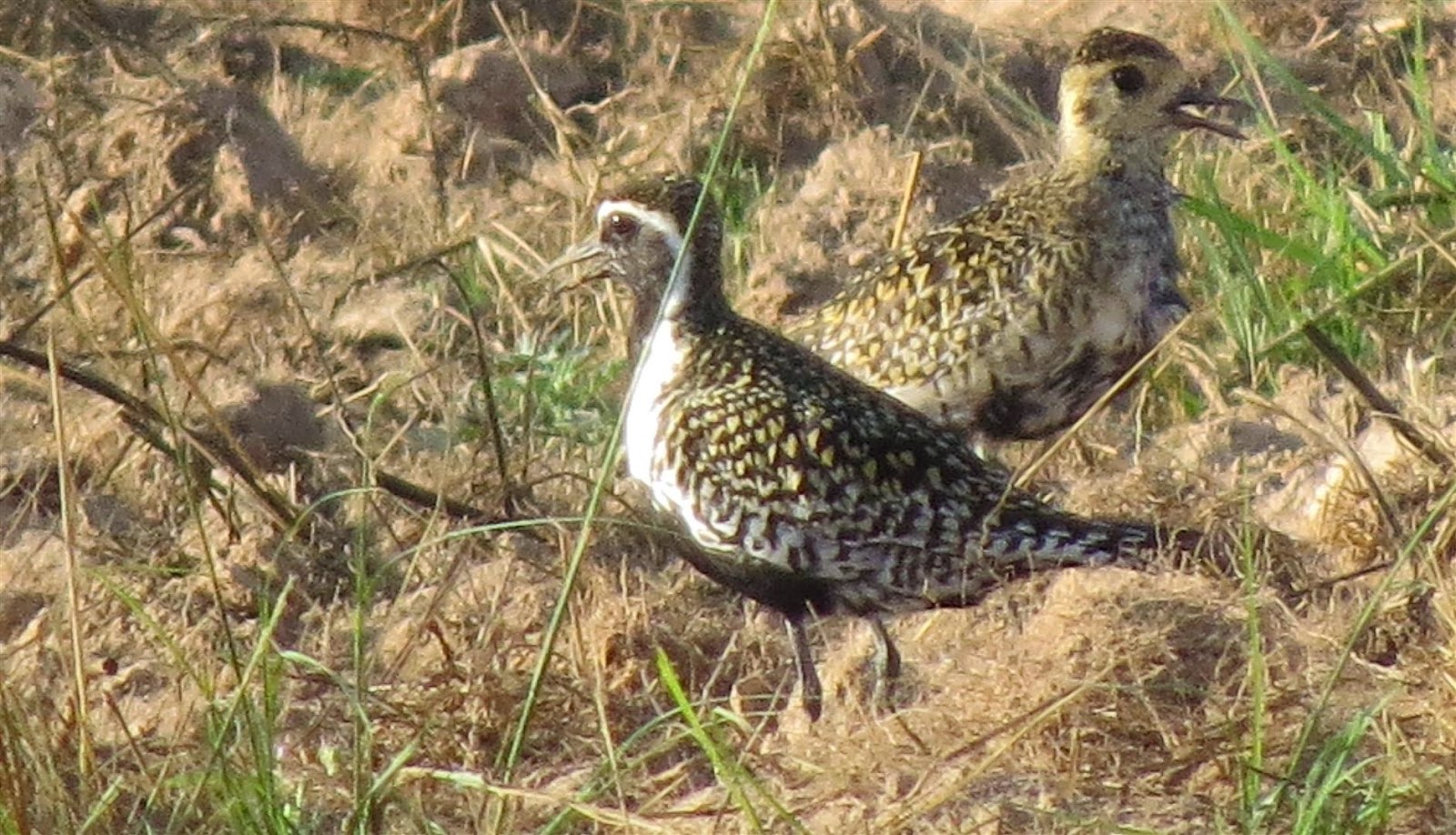Last time there were an adult male and an adult female. This time there was an immature male and what I believe was an immature female too.
resting immature male Amur falcon
I would have loved to have stayed longer but I had work to go to so the photos are what I managed in a short time. Better ones would have come with time.
The male is immature as it still has streaking on the underparts and on the underwing.
immature male Amur falcon in flight
I didn't get such good views of the female but I got a flight picture which eluded me when last week's female flew through.
female Amur falcon
Just as I saw two Amur falcon as I had four days before, there was also a oriental honey buzzard as also seen on both days. I don't know whether this was the same bird or not. However I did get better views.
oriental honey buzzard 1
The six fingers and lack of a dark carpal spot rules out European honey buzzard which I still haven't seen in Oman. While some oriental honey buzzard winter here, the European bird is only seen on passage.
oriental honey buzzard 2
Indeed I had been seeing ones and two oriental honey buzzard all winter in Salalah from time to time.
oriental honey buzzard 3
A new sighting for me at Jarziz farm was a flock of Pacific golden plover although I have seen this bird at Sawnout farm before.
flock of pacific golden plover
Most are heading towards breeding plumage.
two pacific golden plover
singing bushlark
The number of common swift passing through has started to tail off. I counted only 10 this time over the fields.
chestnut-bellied sandgrouse
In the scrub next to the field I believe the chestnut-bellied sandgrouse are breeding. The male here walked away as I started out towards ti but there is a female well hidden to his right who stayed put. I dared not go closer as I didn't want to disturb the possible nesting site.
African silverbill
The African silverbill love the long grass in the field.
Graceful prinia
I managed some birding on Tuesday afternoon too. I will blog about that next.













Enjoy the Amurs. It's still quite a rarity here. I rate it as one of the best birds I've seen in recent years.
ReplyDeleteGreat photos. Awesome birds.
ReplyDeleteThanks folks. It helps to be in the right place at the right time. I know where and when that is now. R
ReplyDelete